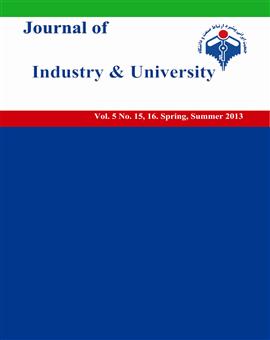Entrepreneurship and Small and Medium-sized Industrial and Technological Enterprises: Constraints, Potential and Solusions
Subject Areas :
drnemati drnemati
1
*
,
masoud shafiee
2
![]()
1 - گروه مدیریت آموزش عالی، دانشکده روان شناسی وعلوم تربیتی، دانشگاه علامه طباطبایی، تهران، ایران
2 -
Keywords: Entrepreneurship, Government, University, Industry, SMEs,
Abstract :
Last decades, the dynamic and efficient relationship between government, university and industry has been the main purpose of governers, universities and industrians and despite numerous conducted studies, programs and initiatives, the gaps remained. On the other hand, according to the role of SMEs in development and institutionalization of entrepreneurship and accelerate the process of scientific, technological, industrial and economical development, it is more than one decade that some centers are created for directing and supporting these enterprises in different sectors of society and the dream of relationship between government, university and industry are realized through knowledge and technology - based SMEs. But due to lack of over sectorial approach to these centers and parallel works of their main sponsers- ministries of science, research & technology and industries & mines- despite the spread of these centers, the goals and missions particularly about strengthening the relation between government, university and industry are ambiguous. So it is recommended to review and rethink the goals, missions and mechanisms of these centers in their second decade of their activity
1. زولتان جی اکس، بوکارلسون و روی توريک، "نقش صنايع کوچک در اقتصاد مدرن" ترجمه: جهانگير مجيدی، مؤسسه خدمات فرهنگی رسا، صص 86 – 78، 1381.
2. سازمان صنايع کوچک و شهرکهای صنعتی ايران، "آشنايي با خوشههای صنعتی" روابط عمومی و بين¬الملل سازمان صنايع کوچک و شهرکهای صنعتی ايران، 1386.
3. شفيعی، مسعود، "ارتباط دانشگاه و صنعت؛ آيندهای تابناک، پيشينهای تاريک"، تهران، دانشگاه صنعتی اميرکبير، صص 51 – 46، 1382.
4. فرجادی، غلامعلی و رياحی، پريسا، "بررسی بازار محلی پارکهای علم و فناوری ايران"، فصلنامه پژوهش و برنامهريزی در آموزش عالی، شماره 44، صص 34 – 32، 1386.
5. قديريان، عباسعلی و اصيلی، غلامرضا، "رسالت دولت، دانشگاه و صنعت در توسعه ملی"، فصلنامه پژوهش و برنامهريزی در آموزش عالی، شماره 37، صص 14 – 12، 1384.
6. Aernoundt, R., " Incubators: Tools for Entrepreneurship", Institute of Management Consultants of Jordan, pp. 112-119, 2002.
7. Asian Science Park Association(ASPA) (2002), http://www.ASPA.or/eng/
8. Chakrabarti A. K. and Richard K. L., "Regional Economic Development: Comparative Case studies in the US and Finland", Proceedings IEEE Conference on Engineering Management Cambridge, UK, pp. 26-29, 2002.
9. Kuratko D. F. and Hodgetts R. M., "Entrepreneurship: Theory, Process, and Practice" Mason, OH: South-Western Publishers, pp. 24-39, 2005.
10. Link A. N. and Scott J. “Science Parks and the Academic Missions of Universities: How to Overcome Cultural Barriers Against Innovation”. Proceeding XX
IASP World Conference on Science and Technology Parks. Lisboa, Portugal, pp. 24-26, 2002.
11. Neamati, M.A and Jamshidi, L., “The Role of Key Performance Indicators (KPIs) in Succession of Incubators: A Case Study”, IASP Asian Division Conference, Isfahan, pp. 332-341, 2006.
12. Robertson, T. (2007); "Characteristics of Effective University-Industry Research Relationships"; ProQuest, UMI Microform 3219672, pp. 16-19.
13. Santarelli, E. and Vivarelli, M., "Entrepreneurship and the Process of firms’ Entry, Survival and Growth". Ind. Corp. Change, pp. 440-448, 2007.
14. Scricca, C. A., " University-Industry Research Partnerships: Motivation for Collaboration"; University of Pennsylvania, pp. 10-18, 2006.

